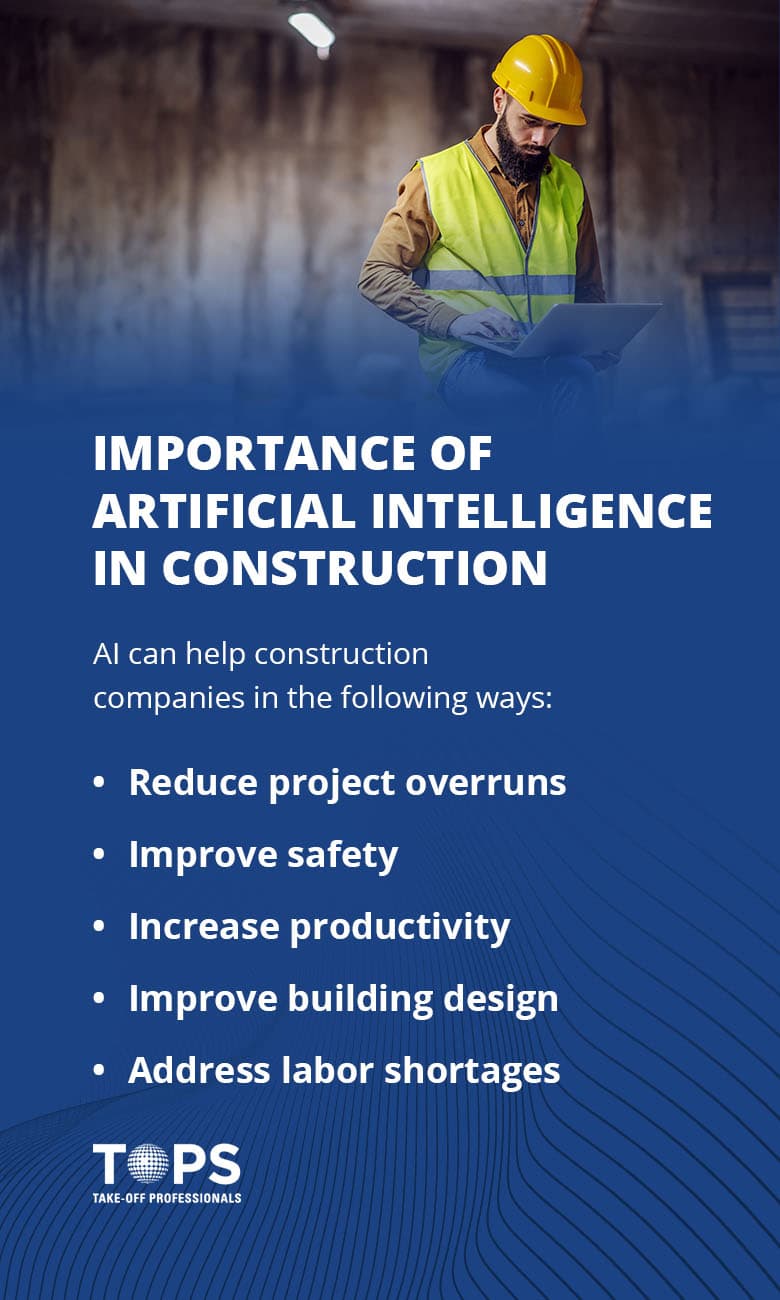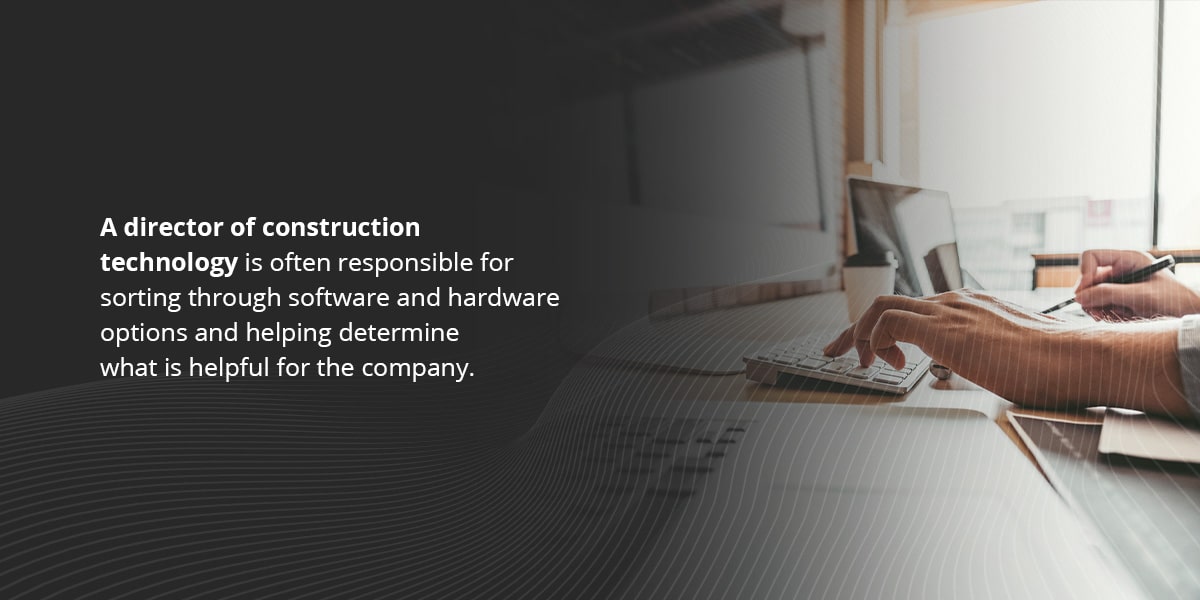You might not initially think that construction and technology go hand in hand. But looking at the industry’s history and how modern construction processes and techniques differ from those of a century ago makes it easy to see the importance of technology in construction. One way to get a sense of how the construction industry has developed or evolved over time is to look at the tools people use. As the construction industry has developed, the available positions have also changed. Many construction companies now look to hire people with technology and construction skills. In some cases, the blend of modern technology with construction has created jobs that didn’t exist just a few years ago.
Technology Is Changing the Construction Industry
Technology has shaped the construction industry since the beginning. The invention of power tools in the late 19th century meant that people could work more quickly. The development of heavy equipment also streamlined the work process and allowed projects to grow bigger while reducing the cost of the projects. Other advancements also allowed for new types of projects. Elevators, for instance, allowed buildings to reach sky-high, rather than limiting them to being just a few stories tall. The impact of technology on the construction industry continues today. While power equipment and automated equipment accelerate projects and eliminate the need for human workers to perform repetitive tasks, the development of software tools, artificial intelligence and virtual reality are continuing to alter the construction landscape. Changes in the way the world approaches work have accompanied technological advances in construction. Like many industries, the construction industry had to pivot and adjust once the COVID-19 pandemic began. One notable shift was that to remote work. While many project elements still need to be completed in person, many day-to-day, back-and-forth communications between project managers and laborers don’t need to be face-to-face. Using platforms that allow for video conference calls has allowed managers to check in with their teams, assigning tasks and responsibilities for the day. The same is true for the ordering process. In many cases, there’s no reason for a project manager to visit a brick-and-mortar store to order supplies. Digital ordering is much more streamlined and efficient. Similarly, digitized payment options allow construction companies to get paid for projects more efficiently and eliminate the need to track down checks or visit a bank. Digitization and video conferencing are just two examples of newer technologies that are pushing the construction industry forward. Other examples include:
1. 3D Modeling
In the past, machine operators had to rely on the location of surveyor’s posts and their own skills to operate heavy equipment successfully. The precision of the stakes and operators’ skill had a significant impact on a construction’s site overall productivity. A poorly placed stake or a stake that moved due to weather could set a project back. The use of 3D model machine control is helping bring construction sites into a new era of efficiency. Machine control relies on positioning sensors, such as sonic tracers, GPS systems and rotating lasers. The sensors give machine operators real-time feedback on the position of their buckets or blades. The sensors also provide data on target grades. The result is heavy equipment that’s safer to use and more accurate.
2. Building Informational Modeling

3. Virtual Reality
Virtual reality (VR) goes one step beyond 3D modeling and BIM. It allows engineers, architects, clients and others involved in the process to walk through or tour a building model before construction begins. VR can improve cost efficiency while reducing the chance that a client will be dissatisfied with the final result.
4. Off-Site Construction
Off-site construction isn’t a new concept, but it’s a process greatly aided by technological developments. With off-site construction, building components get assembled in a climate-controlled environment. The components are then sent to the construction site for assembly. Putting components together in a controlled environment protects them from the elements and reduces delays due to inclement weather. There is also less damage or wear and tear on the components when they get assembled in a temperature-controlled environment.
5. Software Platforms and Apps
Software platforms help streamline multiple areas of the construction industry. Project managers can use apps to keep tabs on project schedules and budgets and to communicate with their team when off-site. Software apps also integrate with VR and BIM to enhance the modeling and design process. Many of today’s construction software platforms are cloud-based and can be accessed from anywhere there’s an internet connection.
Importance of Artificial Intelligence in Construction

- Reduce project overruns
- Improve safety
- Increase productivity
- Improve building design
- Address labor shortages
Top Construction Technology Careers
The adoption of technological advances in construction has led to the creation of careers and positions that didn’t exist a decade ago. Developers, architectural firms and general contractors are now seeking individuals who have a knowledge of construction and how to use technology to improve processes. The demand for tech-friendly construction workers has led to several tech-focused careers.
1. Data Analysts
Data analysts, also known as operation research analysts, use math and logic to help the companies they work with solve problems. The exact role of data analysts varies based on the company they are working with. Construction technology enables those in this role to use data analytics to:
- Create schedules
- Help project managers decide how to use resources
- Supervise the supply chain
- Evaluate site safety
The job of a data analyst often begins with a problem. The analyst might identify the problem on their own or work with other team members to determine the biggest issue facing a company. The analyst then collects data on the problem. They’ll break the issue down into various components, using database software, data mining and forecasting. Being a data analyst requires a person to be comfortable with some trial and error. When assessing information, the analyst will examine the impact any changes or different circumstances will have on the outcome. They might adjust the number of workers during a shift or run simulations that examine the effect of different types of weather. A data analyst can help a construction company decide the best course of action to take to achieve certain project goals. They’ll present multiple options and paths forward, providing information on the pros and cons of each option. When presenting their findings to their manager, they’ll make recommendations and provide data-based justifications for their recommendations.
2. Directors of Construction Technology

3. Project Managers
Project and construction manager roles existed before the rise in technology. But advancements have shaped how the job is performed and the skills a person needs to succeed in it. During a construction job, the project manager needs to coordinate and supervise every aspect of the project. They might be there during the design phase and the construction phase. Project managers often have to ensure projects are up to code and meet any required design specifications. They’re also responsible for keeping projects on schedule and on budget. Often, they need to juggle managing multiple projects simultaneously. Usually, project managers work with engineers and architects on a project. They might also have to interact with the authorities, such as a municipality’s inspection board, elected officials and lawyers. In many cases, they hire other people to manage various project aspects. For instance, the project manager might hire an electrical manager and a structural engineer. They’ll then be responsible for overseeing the work of the other managers. Technology, such as scheduling software, can streamline the role of a project manager. Individuals in these roles can also benefit from a knowledge of BIM and 3D modeling programs. Since project managers are responsible for keeping a project on budget, accounting programs and AI can also help them do their jobs more effectively.
4. Computational Engineers
A computational engineer is someone who can write algorithms and computer scripts that scan BIM renders and 3D models, looking for potential code violations before construction begins. The field of computational engineering is relatively new. It merges advanced computational analysis and methods with engineering. Computational engineers have extensive backgrounds in science and engineering, as well as thorough knowledge of computer languages, math and algorithms. Those who work in the construction industry also have extensive knowledge of construction practices and requirements. Computational engineers are dedicated to data. They know how to interpret and use this information to solve problems or keep problems from developing in the first place. Although computational engineers have an essential role to play in the construction company of the future, it can be challenging to get them to work in the field. Many people who are drawn to careers in computational engineering want to work at established technology companies or start-ups. They might not be considering a career in the construction industry initially. But those who do move into the construction sector are likely to see a significant demand for their skills, which can be a win-win situation for the engineers and the companies that hire them.
Contact Take-off Professionals for All of Your Construction Data and Technology Needs
Your construction company stands to benefit from data and technology. If you can’t afford to hire a director of construction technology or a computational engineer full-time, Take-off Professionals is here to help. We work with construction companies on three different levels. We can act as your engineering staff, taking on all responsibility for data gathering. We can also fill in any gaps in your team or provide supplemental support. Whichever service level you choose, you can rest assured that we’ll build the best data and provide the best take-offs available. For each job, we use four software programs, which allow us to put together the best package for your project. Our team takes on hundreds of projects annually, much more than even the largest contractors can handle. If you’re ready to increase your construction technology stack but can’t hire full-time, contact us. We only need your paper plans, computer-aided design (CAD) files and a work order to start. Get in touch for your free quote today. 

